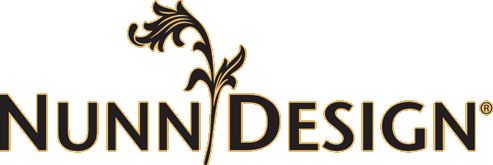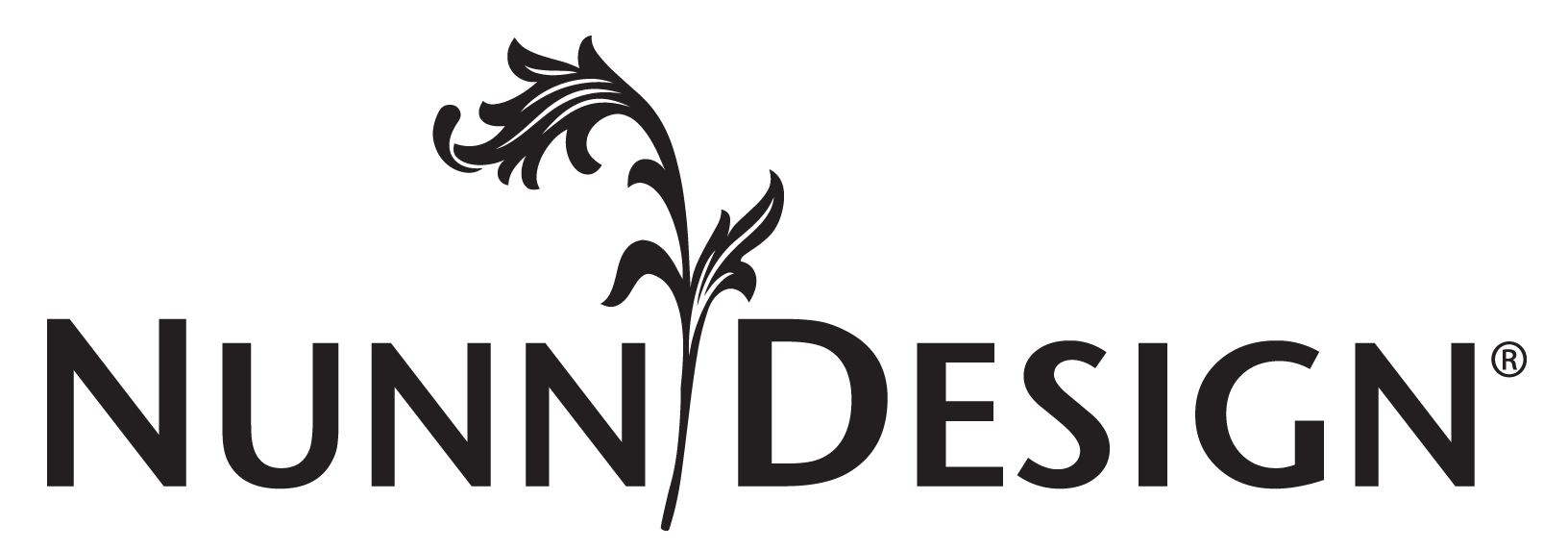Nunn Design Online Classes, Tutorials
How to Mix and Colorize Epoxy Clay with Castin’ Craft Opaque Pigments. Tutorial + Video

Epoxy Clay is a two-part epoxy clay that air dries in 120 minutes and cures within 12 hours. It is ideal for sculpting and embedding. I love this medium and am continually finding techniques for creating with it.
Epoxy Clay comes in a variety of colors, but Nunn Design distributes only the White, Black and Brown. Any color that you would like to make can be created by colorizing the Epoxy Clay-White with Castin’ Crafts Opaque Pigments.
Any color can be created once you learn the basics. We have created dozens of Pantone color formulas for you to choose from in our Pantone Cheat Sheet. This tutorial will walk you through the how-to steps for colorizing Epoxy Clay to achieve a denim blue color and creating a color sampler chart by slightly tweaking the color portions of the color formula.
Watch a Video Tutorial!
Watch this 22 minute video for an overview of the process!
Supplies Needed:
Epoxy Clay-White
Castin’ Craft Opaque Pigment-White
Castin’ Craft Opaque Pigment-Blue
Castin’ Craft Opaque Pigment-Black
Other Supplies Needed:
Wet wipes
Toothpicks
Gloves
Baby Powder
Plastic Bags, such as a Zip-Lock Bag
How To!
How to Mix Epoxy Clay
Step 1: Epoxy Clay is a 2-part epoxy. Mixing equal parts of A & B activates the clay.

Once the clay is activated you have 90-120 minutes before the clay hardens and you can no longer sculpt or embed objects. Prior to mixing the 2 parts, it is recommended by the manufacturer to wear gloves when handling. Once the clay is mixed it is activated and is neutral and gloves are no longer necessary.
The gloves that come within the Epoxy Clay 50gram Kits are not my favorite. They are way too big for my hands and I have a heck of time mixing and colorizing the clay while wearing them. If you are having the same challenge try a different brand. If you do not have a latex allergy, I recommend using a pair of industrial, powder-free, 5 mil, latex gloves sized to fit your hand snugly.
I use my latex gloves over and over again to prevent waste. To get the most usage out of the gloves, place baby powder generously over your hands prior to putting the gloves on. This will make it easier to get the gloves off once you are finished mixing and colorizing the Epoxy Clay.

Step 2: With the gloves on, open up the packages of Epoxy Clay and pinch off two equal-sized balls of Part A and Part B. Blend together the 2 parts fully until the clay is no longer marbled and is uniform in color.

Tip: I guesstimate the amount of Epoxy Clay that I will need to fill the bezels for the project I’m working on. I would recommend having plenty of bezels prepped just in case you have excess clay.
Tip: Make sure to wrap up your Epoxy Clay to prevent it from drying out and hardening. Store Part A and Part B in separate zip-lock bags to avoid contamination while it is in storage.
Step 3: Use a wet-wipe to fully wipe down your gloves, removing any Epoxy Clay. You will want to keep your gloves on. If the clay is sticky, you can wait 10 minutes to let the clay set-up a little. This will help it be less sticky when you apply the Castin’ Craft Opaque Pigments.
Colorizing the Epoxy Clay with Castin’ Craft Opaque Pigments

Step 4: To decide the Pantone color you’d like to create, download the Nunn Design Pantone Cheat Sheet to see the dozens of colors and color formulas that you can choose from.
For this tutorial, I’ll walk you through the steps to creating a denim blue color and a sampler of other colors that can be created by tweaking the portions of Castin Craft Opaque Pigment.
By looking through the Pantone Cheat Sheet of color options, I could see that in order to create a deep denim blue color, I would need Castin’ Craft Opaque Pigments in White, Blue, and Black. The color formula was meant for mixing with Nunn Design 2-Part Resin, so I knew there would be a little tweaking that needed to happen, but those 3 colors would get me started in the right direction.
The color formulas call for different portions of Castin’ Craft Opaque Pigments. The portions of the pigment are created using toothpicks. Here is a visual of what the formulas portions look like:

1 ttp = 1 tiny toothpick

1 ltp = 1 large toothpick
Here are the color sampler and the color formulas that I used to create the various shades of denim.


Step 5: To create one of these colors for the sampler, shake the containers of white, blue and black Castin’ Craft Opaque Pigments. Squeeze a heavy squirt of each of the pigments onto a piece of plastic.

TIP: Make sure to apply the lids of the Castin’ Craft Opaque Pigments right after you use them. I can’t tell you how many times I have contaminated my colors by putting on the wrong lids!
Step 6: The formulas are based on applying the colorants on a round size ball of mixed Epoxy Clay about the size of a very large blueberry. If you are mixing a larger sized ball of Epoxy Clay, just adjust your formula appropriately.

Step 7: To colorize the mixed Epoxy Clay with the Castin’ Craft Opaque Pigments, flatten the clay ball slightly. Add in the color formula of opaque pigments using several toothpicks. I like to place the opaque pigments onto the flat surface and then fold the clay around the pigments. The intention is to keep more of the opaque pigments in the clay and less on my gloves.

Step 8: Blend the clay and opaque pigments fully until blended. If you want to create a darker color, add more of the blue and black. If you want to create a lighter color, you can add white or more of the non-colorized mixed White Epoxy Clay.

Step 9: To be able to reuse your gloves, wipe them down fully with a wet-wipe before removing. To remove the gloves from your hands, pull at the fingertips and then pull the full glove off. This will prevent it from turning inside out and potentially getting some of the opaque pigment on the inside of the gloves and on your hands. The colors are potent and stain very easily.
Step 10: Whatever colors you create, make sure to record your formulas so that you can recreate it another time or better yet, share it with others!
Be Inspired and Learn More!
Here are examples of other mixed media jewelry that you can create using Epoxy Clay. Each of the jewelry samples listed below have tutorials and videos to explore and learn even more!

Read the full tutorial on our blog: Embed Faceted Ball Chain to Epoxy Clay

Read the full tutorial on our blog: Embedding Crystal Chatons to Epoxy Clay

Read the full tutorial on our blog: Embed Seed Beads into Epoxy Clay

Read the full tutorial on our blog: Sculpting Epoxy Clay using a Silcone Mold and Colorized Resin

Read the full tutorial on our blog: Post Earring Bars with Epoxy Clay and Gilding Flakes

Read the full tutorial on our blog: Epoxy Clay with Crackled Gilding Flakes and Nunn Design Resin

Read the full tutorial on our blog: Epoxy Clay with Gilding Flakes and Nunn Design Resin

Read the full tutorial on our blog: Epoxy Clay with Skeleton Leaves

Read the full tutorial on our blog: Sculpted Epoxy Clay with Jaquard PearlEx Powder
Create this Technique in Class!
Epoxy Clay
Shop Nunn Design Wholesale
Nunn Design has been supplying jewelry artists with findings for over 20 years. Shop wholesale jewelry findings for creative jewelry makers.
Shop Nunn Design!How to Purchase Wholesale?
If you are interested in becoming one of the many designers who trust their jewelry to Nunn Design Findings, please join us by registering to become one of our wholesale customers!
Please visit our Where to Buy Page for a listing of online stores that sell Nunn Design Findings retail.
If you enjoyed reading this post, please subscribe to our blog. Here are 10 Reasons Why to Subscribe and a place to do so!







I would like to learn about using sculpting epoxy clay
I want to learn about epoxy sculpting clay as art projects